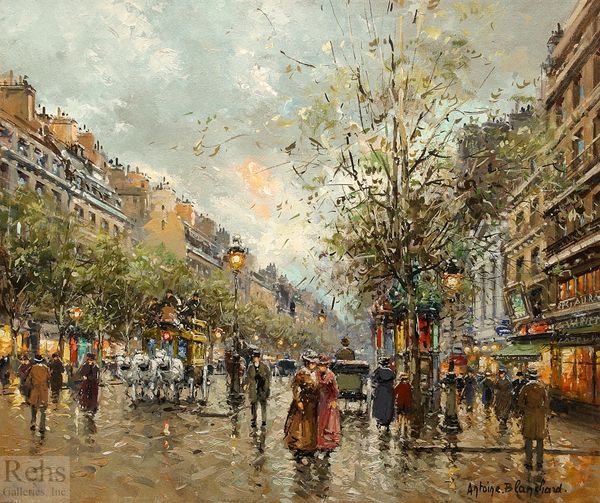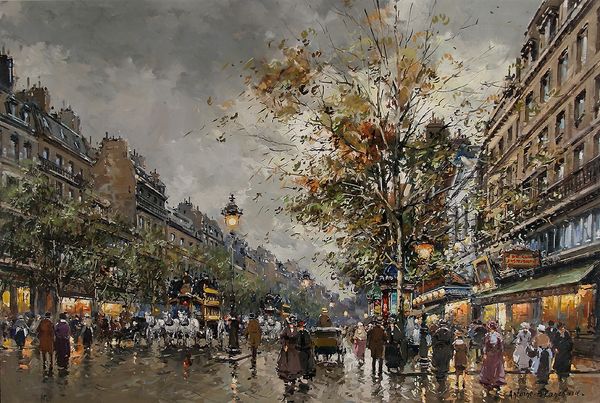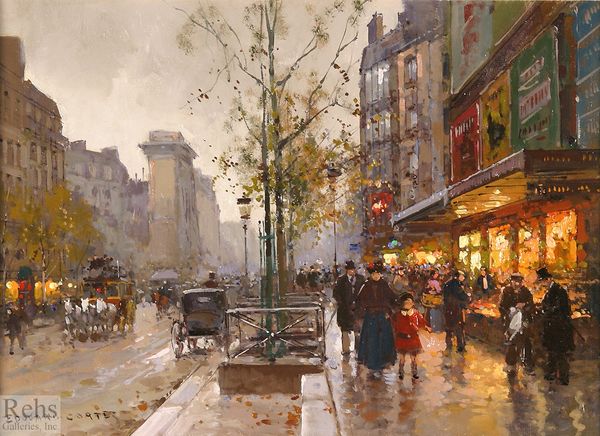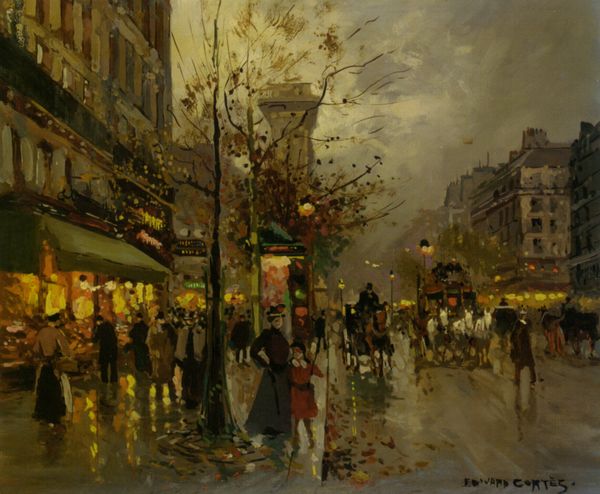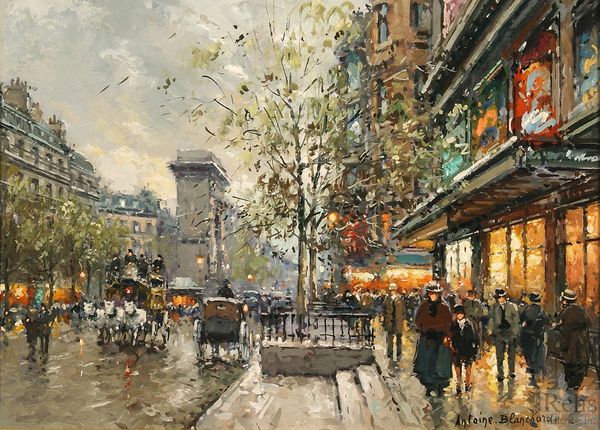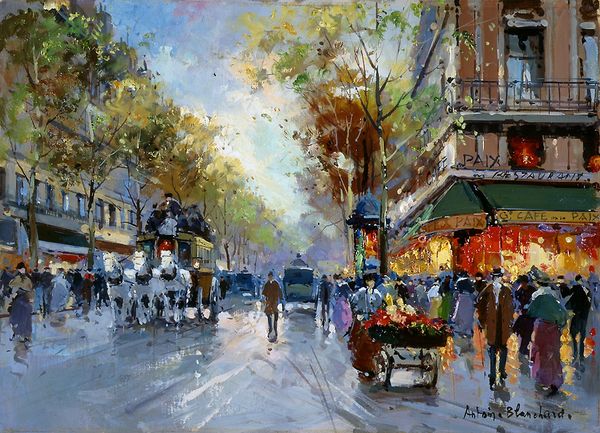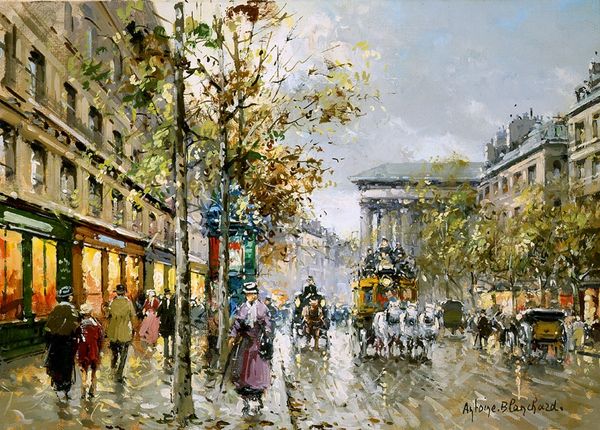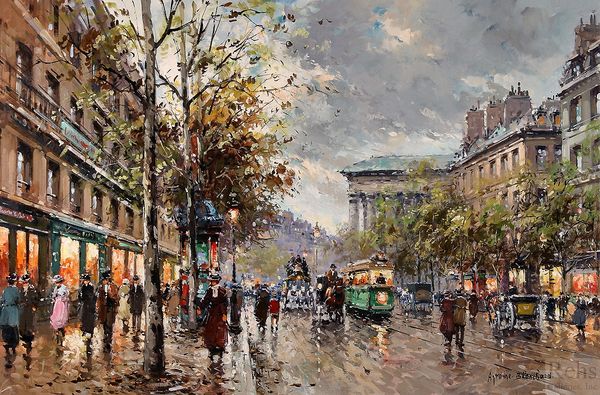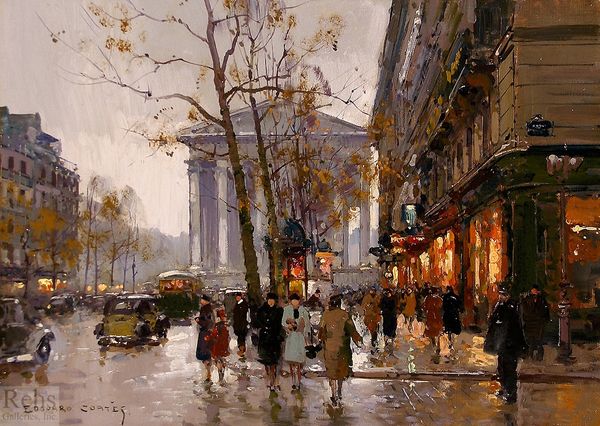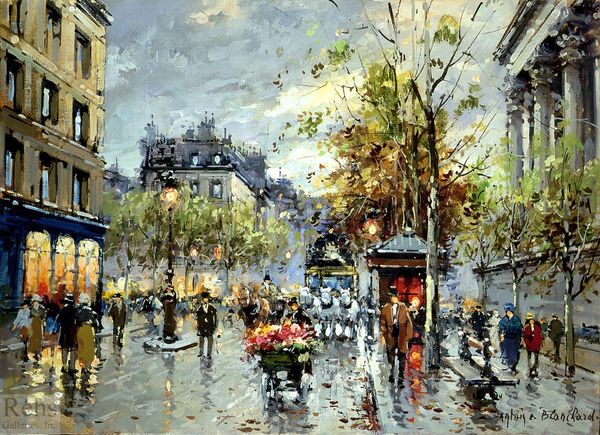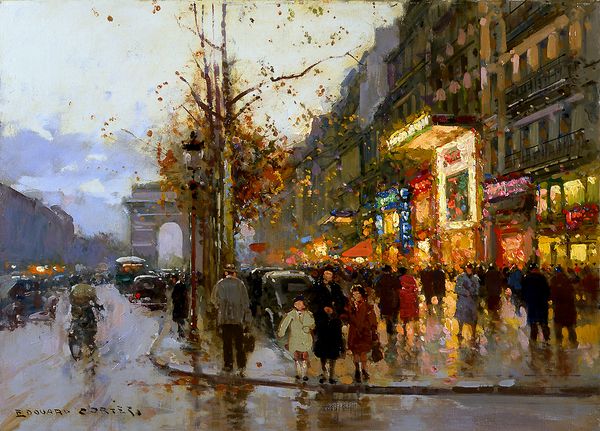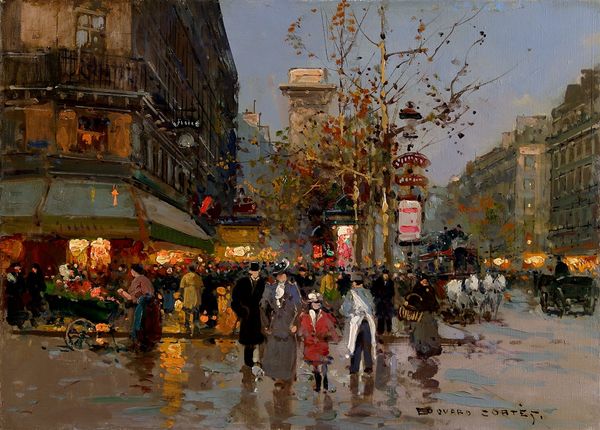
painting, oil-paint, impasto
#
flâneur
#
painting
#
impressionism
#
oil-paint
#
landscape
#
impasto
#
cityscape
#
post-impressionism
#
modernism
#
realism
#
building
Copyright: Antoine Blanchard,Fair Use
Editor: Here we have Antoine Blanchard's "Place de la Madeleine," an oil painting rendered with visible brushstrokes. It gives off such a bustling, lively feel despite the gray day. What catches your eye about it? Curator: Well, immediately I see the romanticized depiction of Parisian life that became so popular, especially for tourists. The very choice of Place de la Madeleine is telling. It's a recognizable location, an emblem of Parisian sophistication, yet it’s presented almost as a stage set. How does that strike you? Editor: I see what you mean! It's almost too picture-perfect to be genuinely gritty or realistic. It's more of an idealized impression. Do you think that’s intentional on Blanchard’s part? Curator: Absolutely. Think about the social context: art was increasingly becoming a commodity, and scenes like this catered to a specific market, those who desired a tangible piece of the Parisian dream. The artist’s signature style becomes almost a brand. What kind of power dynamics does that reveal? Editor: Hmmm…that the market shapes the artist's vision? It is creating art to satisfy consumer demands and specific cultural expectations around the representation of Paris. So the flâneur, the city, everything’s carefully packaged… Curator: Precisely. And by understanding that context, we see how Blanchard’s work participates in a larger, very commercial conversation. Is the art selling an experience more than capturing reality? Editor: It's less about representing reality as it is creating an idea, maybe an expectation, for an audience. It makes me see it differently! Curator: And that’s precisely the point, isn't it? Examining these underlying socio-economic forces lets us grasp how the piece functions, then and now.
Comments
No comments
Be the first to comment and join the conversation on the ultimate creative platform.
